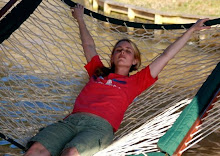
I couldn't find the largest pinhole photograph but I did find the largest pinhole camera. It is described: "A huge piece of muslin cloth was made light sensitive by coating it with 80 litres of gelatin silver halide. It was hung from the ceiling at a distance of about 80 feet (24 m) from a pinhole, just under ¼ inch in diameter, situated 15 feet above ground level in the wall. The distance between the pinhole and the cloth was determined to be 80 feet for best coverage, and the exposure time was calculated at 35 minutes. The opaque negative image print was developed in an Olympic-swimming-pool-size tray with 600 gallons of traditional developer and 1200 gallons of fixer, and was washed using fire hoses attached to two fire hydrants. The resulting finished print was nearly 108 ft wide and 85 ft high and was exhibited for the first time at the Art Center College of Design in Pasadena, California, on September 6, 2007."
This is interesting because pinholes don't really have a center of focus; they sort of absorb the world in which is presented to them. This is why I like pinhole photography so much because it just absorbs independent of the photographers intentions. One can place the camera in a certain direction but one is not completely certain of what will and won't be absorbed. That is the sheer magic of pinhole photography; it absorbes independent of anything else.

No comments:
Post a Comment